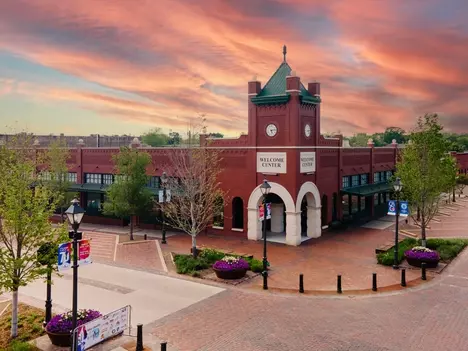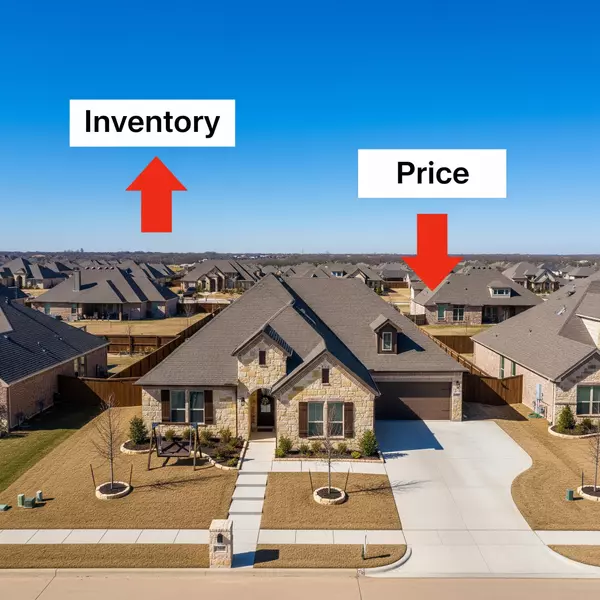Navigating the Texas Terrain: Unpacking PIDs and MUDs for Homebuyers
Buying a home in the Lone Star State is an exciting prospect, filled with visions of wide-open spaces, friendly communities, and your own little slice of Texas heaven. However, beneath the surface of charming neighborhoods and attractive listings lie two acronyms that every prospective homeowner should understand: PIDs (Public Improvement Districts) and MUDs (Municipal Utility Districts).
These special districts play a significant role in the development and maintenance of many Texas communities, and while they often contribute to a higher quality of life, they also come with associated costs that can impact your budget. Understanding the nuances of PIDs and MUDs is crucial for making informed decisions and avoiding unexpected financial burdens down the road.
So, let's roll up our sleeves and delve into the details of these Texas-specific entities, equipping you with the knowledge you need to navigate the terrain of homeownership with confidence.
What Exactly is a Municipal Utility District (MUD)?
Imagine a newly developed area on the outskirts of a city. Before residents can move in and enjoy modern conveniences, essential infrastructure needs to be established. This includes:
- Water and Wastewater Services: Providing potable water for drinking and daily use, and managing the collection and treatment of sewage.
- Drainage and Flood Control: Implementing systems to manage stormwater runoff and mitigate flood risks.
- Roads and Paving: Constructing and maintaining the streets within the community.
- Parks and Recreational Facilities: Developing green spaces, playgrounds, and other amenities for residents.
Traditionally, these services are provided and funded by the city or county. However, in developing areas, especially those outside established municipal boundaries, a Municipal Utility District (MUD) often steps in.
A MUD is a special-purpose district authorized by the Texas Commission on Environmental Quality (TCEQ) and governed by an elected board of directors, typically composed of residents within the district. This board has the authority to issue bonds (similar to loans) to finance the construction of the necessary infrastructure.
How does this impact you as a homeowner?
The cost of building and maintaining this infrastructure is ultimately passed on to the residents within the MUD through property taxes. In addition to the regular city or county property taxes, homeowners in a MUD will pay an additional MUD tax. This tax is used to:
- Repay the bonds issued to finance the initial infrastructure construction.
- Fund the ongoing operation and maintenance of the water, wastewater, drainage, and road systems.
- Support the maintenance of parks and recreational facilities within the district.
Key Takeaways about MUDs:
- Purpose: To finance and provide essential infrastructure and services in developing areas.
- Funding: Through the issuance of bonds, repaid by residents via MUD property taxes.
- Governance: Governed by an elected board of residents.
- Benefits: Ensures essential services are in place for new communities, often leading to well-planned developments with amenities.
- Considerations: Adds an extra layer of property tax, the amount of which can fluctuate based on the MUD's debt and operational needs.
Delving into Public Improvement Districts (PIDs)
While MUDs focus on essential utilities and infrastructure, Public Improvement Districts (PIDs) serve a slightly different purpose. PIDs are special districts created by a city or county to finance specific public improvements and services within a defined area that provide a benefit to the properties within that district.
These improvements and services can be more varied and often focus on enhancing the quality of life and the aesthetic appeal of the area. Examples of PID-funded projects include:
- Streetscape Enhancements: Installing decorative lighting, landscaping, sidewalks, and street furniture.
- Parks and Open Space Development: Creating and maintaining larger, more elaborate parks, trails, and green spaces.
- Public Safety Initiatives: Funding additional security patrols or enhanced public safety measures.
- Economic Development Projects: Supporting initiatives aimed at attracting businesses and boosting the local economy.
- Transportation Improvements: Contributing to the development of specific transportation projects within the district.
Unlike MUDs, which are typically established in developing areas, PIDs can be formed in both new and existing communities. The initiative to create a PID often comes from developers or property owners who want to enhance their area beyond the standard services provided by the city or county.
How does this impact you as a homeowner?
The funding mechanism for PIDs differs from MUDs. Instead of a general property tax, property owners within a PID are typically assessed a special assessment or PID assessment. This assessment is usually calculated based on the value of their property or on a per-lot basis and is added to their property tax bill.
The funds generated from these assessments are specifically earmarked for the improvements and services outlined in the PID's service plan. The duration of the PID assessment varies depending on the projects being funded and the terms of the agreement establishing the district.
Key Takeaways about PIDs:
- Purpose: To finance specific public improvements and services that benefit properties within a defined area, often enhancing aesthetics and quality of life.
- Funding: Through special assessments levied on property owners within the district.
- Governance: Governed by the city or county that created the PID, often with input from an advisory board of property owners.
- Benefits: Can lead to more attractive neighborhoods, enhanced amenities, and potentially higher property values.
- Considerations: Adds a special assessment to your property tax bill, the amount and duration of which can vary significantly.
MUD vs. PID: Understanding the Key Differences
While both MUDs and PIDs result in additional costs for homeowners, it's crucial to understand their distinct characteristics:
Why Should Homebuyers Care About PIDs and MUDs?
Understanding PIDs and MUDs is not just an academic exercise; it has real financial implications for your homeownership journey. Here's why you need to pay attention:
- Increased Monthly Costs: Both MUD taxes and PID assessments will add to your monthly housing expenses, impacting your affordability calculations.
- Long-Term Financial Obligations: MUD bonds and PID assessments can last for several years, even decades. You need to factor these ongoing costs into your long-term budget.
- Transparency and Disclosure: Texas law requires sellers to disclose if a property is located within a MUD or PID. This information should be readily available in the Seller's Disclosure Notice.
- Due Diligence is Key: Don't just acknowledge the disclosure; actively investigate the MUD or PID. Understand the current tax or assessment rate, the remaining debt or duration of the assessment, and the services or improvements provided.
- Impact on Property Value: While enhanced amenities funded by PIDs can potentially increase property values, high MUD taxes or PID assessments could make a property less attractive to some buyers.
- Future Tax/Assessment Fluctuations: MUD taxes can fluctuate based on the district's debt repayment schedule and operational costs. PID assessments are typically more fixed but can sometimes be subject to adjustments.
Navigating the Home Buying Process with PIDs and MUDs in Mind
Here's a practical guide to help you navigate the complexities of PIDs and MUDs during your Texas home buying journey:
- Review the Seller's Disclosure Notice Carefully: This document is your first point of contact for information about PIDs and MUDs. Don't just skim it; read it thoroughly.
- Ask Your Real Estate Agent Specific Questions: Your agent should be knowledgeable about local PIDs and MUDs. Ask about the history of the district, the current tax/assessment rate, and any planned future projects or potential increases.
- Research the MUD or PID Directly: Contact the MUD's board of directors or the city/county department responsible for the PID. Request information about their financial status, meeting minutes, and future plans. Many MUDs have websites where you can find this information.
- Examine the Property Tax Bills: Request to see previous property tax bills for the property you are considering. This will give you a clear picture of the historical MUD tax or PID assessment amounts.
- Understand the Long-Term Implications: Consider how the ongoing MUD taxes or PID assessments will fit into your long-term financial plan. Factor in potential fluctuations and the duration of the obligations.
- Compare Properties Carefully: When comparing homes, take into account the presence and costs associated with PIDs and MUDs. A slightly lower base price in a district with high additional costs might not be the better financial choice in the long run.
- Seek Expert Advice: Consult with a real estate attorney or a financial advisor if you have any complex questions or concerns about PIDs and MUDs.
Conclusion: Making Informed Choices for Your Texas Dream Home
PIDs and MUDs are integral parts of the landscape of Texas real estate. They play a vital role in the development and enhancement of communities across the state. While they often contribute to a higher quality of life and attractive amenities, it's crucial for homebuyers to approach them with a clear understanding of the associated costs and long-term financial obligations.
By diligently researching and asking the right questions, you can navigate the Texas terrain with confidence, ensuring that your dream home doesn't come with unexpected financial surprises. Armed with knowledge, you can make informed decisions that align with your financial goals and secure your piece of the Texas pie with peace of mind.
Categories
Recent Posts











